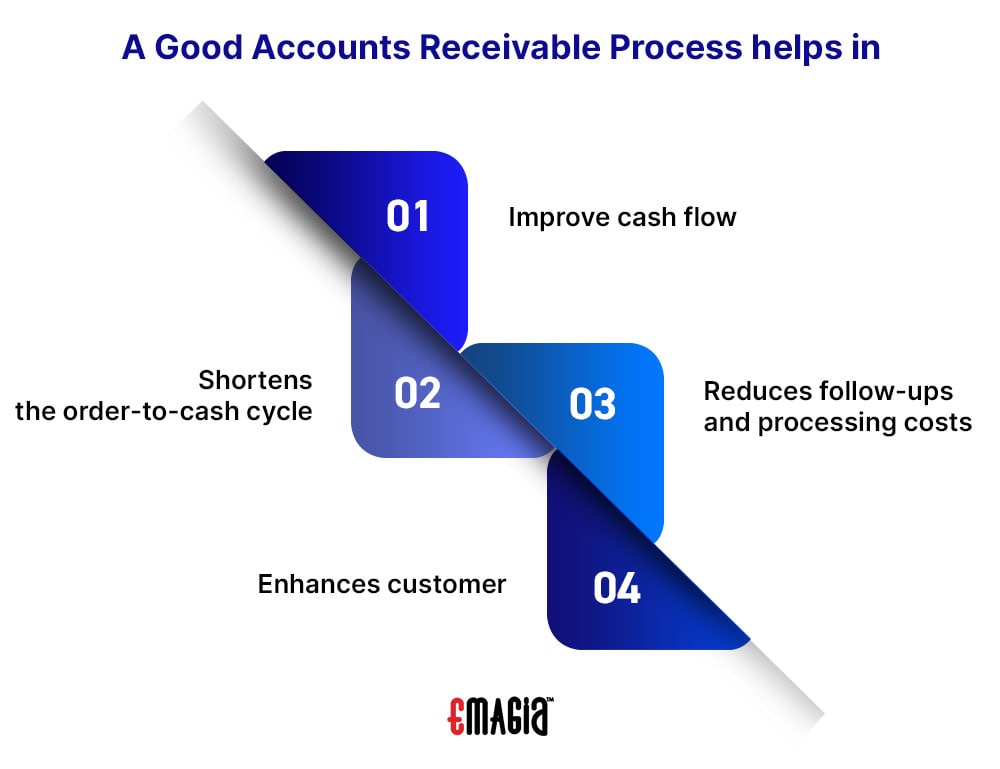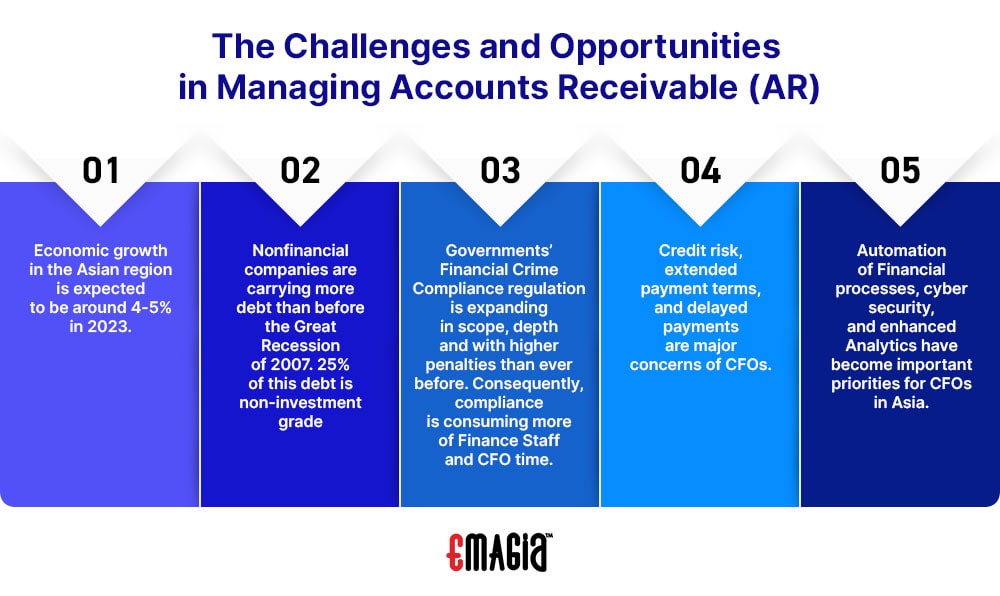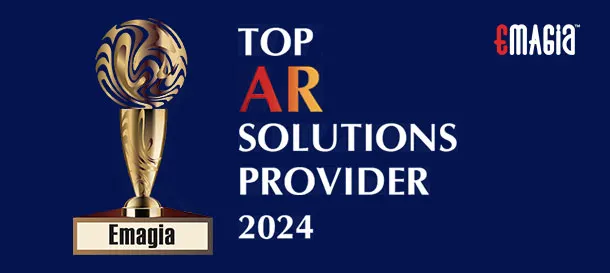Asia remains one of the fastest growing economies in the world. However, in many countries and sectors of this region, payments to suppliers are not made on time, impacting cash flow. For example, the average Day Sales Outstanding (DSO) in China is 92. In this blog, we will look into the key to managing accounts receivable.
What is Accounts Receivable (AR)?
Accounts receivable (AR) is the balance of money owed to a company by its customers for goods or services delivered. The accounts receivable process begins when a customer makes a purchase and ends once the outstanding amount is collected. An AR process usually involves sales, invoicing, collecting payments and reconciliation. A good accounts receivable process remains one of the key elements for the success of any business.
Example of Accounts Receivable
An example of accounts receivable is a medical supplier that has delivered supplies to a retail outlet. Once the manufacturer invoices the store for the medical products supplied, the payment owed is recorded under AR. The accounts receivable (AR) process ends when the manufacturer receives payment from the store, and the records are updated.
What are the main goals of accounts receivable?
One of the key objects of accounts receivable is to collect the money owed to company as soon as possible from customers. Any inordinate delays in collecting payments from customers can impact the cash flow, revenue and profits.

Having a good AR process in place helps:
- Improve cash flow
- Shortens the order-to-cash (O2C) cycle
- Reduces follow-ups and processing costs, and
- Enhances customer relationship
The Challenges and Opportunities in Managing Accounts Receivable (AR)
Managing AR is Asia remains a challenge because of the number of countries, different languages, currencies and cross-border transactions in the region. Small and Medium Enterprises (SMEs) provide approximately two-thirds of jobs and almost half of GDP. Yet, they are the most threatened by the current economy. Their DSO is double that of larger Asian companies (88 vs 42), and bad debt is increasing.
To counter this cash flow (and bad debt) challenge, SMEs are paying their suppliers late and borrowing money. Borrowing is from all sources: personal funds, credit cards, factoring of invoices, and other forms of supply chain finance. This is not sustainable for many of them.
- Economic growth in the Asian region is expected to be around 4-5% in 2023.
- Nonfinancial companies are carrying more debt than before the Great Recession of 2007. 25% of this debt is non-investment grade
- Governments’ Financial Crime Compliance regulation is expanding in scope, depth and with higher penalties than ever before. Consequently, compliance is consuming more of Finance Staff and CFO time.
- Credit risk, extended payment terms, and delayed payments are major concerns of CFOs.
- Automation of Financial processes, cyber security, and enhanced Analytics have become important priorities for CFOs in Asia.

How to Overcome the Challenges in Accounts Receivable (AR) Management
The fundamentals of good AR Management will provide much of what will be required to meet the AR challenges in Asia. Tight credit controls to prevent exposure to financially weak customers is a must. Professional, organized, timely collections are required to maximize cash flow. Many firms are reluctant to engage in this, but that’s a mistake. Financing your customers’ failure to pay their debts is an unsustainable business model.
The other major solution to these challenges is digitization and automation. Digitization to move on from paper-based transactions and accommodate remote work environments. Digital invoicing and digital payments can increase productivity, accuracy, AR portfolio coverage, faster customer response, higher quality credit vetting, and analytics capability.
Automation applications for the processes of AR operations and management have been used for decades, embedded in ERPs and available as separate applications. However, the emergence of newer technologies such as AI, digital finance assistants such as Gia and intelligent document processing methods such as Gia Docs AI can deliver exponential advantage , accelerating the AR process while delivering a superior customer experience.




